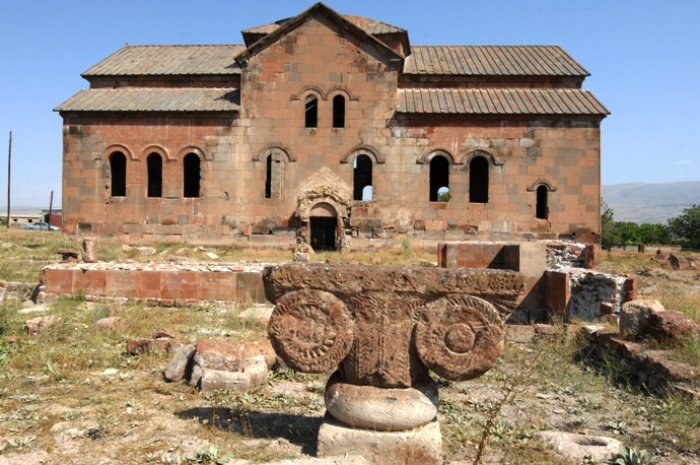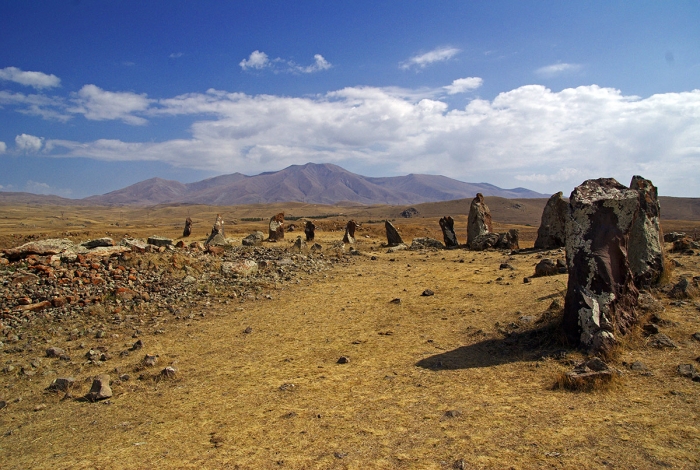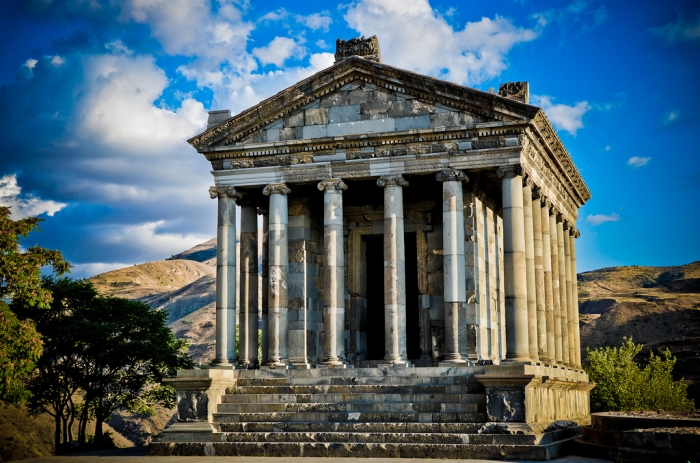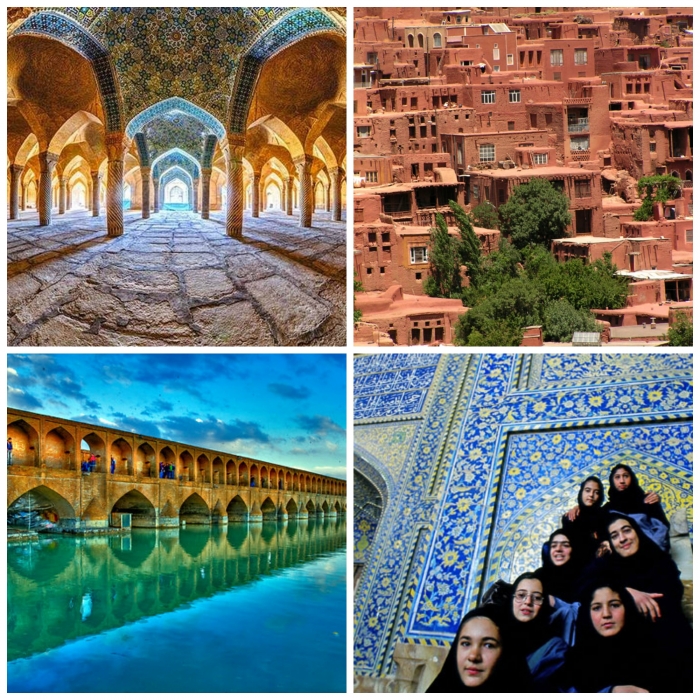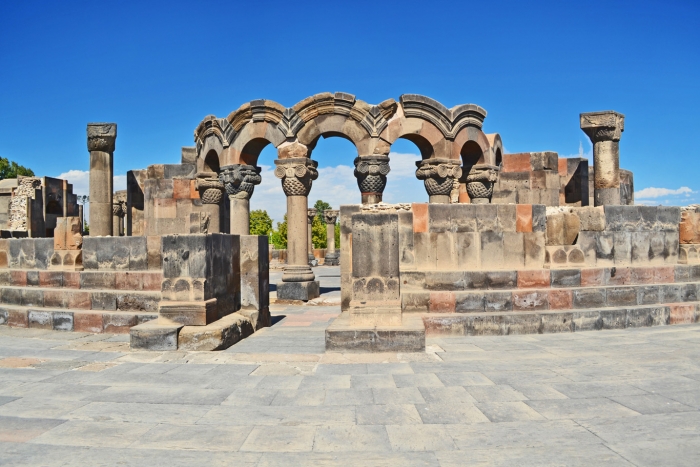Zvartnots Cathedral
Zvartnots Cathedral is located not far from the Etchmiadzin Cathedral in the Armavir Region. It is called both Zvartnots and St. GrigorLusavorich by medieval historians, that was built on the spot where it is believed that Grigor Lusavorich (Gregory the Illuminator) and Trdat the Great met after 13 years of imprisonment of St. Gregory.
Most probably the reason why the cathedral is also called temple, Zvarnots Temple, is due to its pre-Christian origins. The excavations revealed ruins of an Urartian temple foundations. There was also a sacrificial altar and a huge cuneiform inscription dedicated to the construction of a large canal system during the reign of the King Russa II.
A Hellenistic temple to Tir (Apollo) replaced the Urartian structure and stood at the site when King T’rdat met GrigirLusavorich in 301 AD. There after the temple was replaced by a 5th -6th century single-nave basilica which also survives; its foundations are south of the cathedral.
The cathedral is believed to have been built ca. 643-652, during a time of turmoil. Arabs had invaded Armenia, taking the capital at Dvin in 640, and were threatening to take the rest of the country. The CatholicosYez’r died at the same time, precipitating a crisis. Prince TheodorosRshtuni, striving to unite the country against competing claims by Arabs and Byzantines, supported the election of Nerses, a bishop from Taik region. Educated in Byzantium and having served in the Byzantine army, Nerses favored union with the Orthodox Church.
The construction was a great achievement; at the time it Zvartnots type was completely unique, a central dome type where the corners and apses became a part of the whole, suggesting a circle.
In 2000, Zvartnots, along with the churches of St. Hripsimeh, St. Guyaneh and the Mother See at Echmiadzin, was declared a UNESCO World Heritage Site.
Gallery
http://eltravelclub.am/en/attractions/temples-churches-castles/item/204-zvartnots-cathedral#sigProId85f4aa995b



